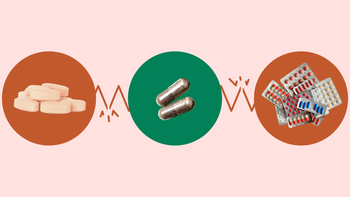
Understanding Grooming: How to Recognize Early Signs of Sexual Abuse
Key takeaways:
Some sexual predators use grooming — the act of building trust and connection with a potential victim, their caregivers, other family members, and sometimes communities — to make sexual abuse easier to hide.
Although grooming often affects children and young adults, vulnerable adults are also at risk.
Grooming behavior can occur both in person and online. So it’s important to openly communicate with your child and monitor their online activity.
Table of contents

The idea that most sexual predators are strangers lurking in parking lots or offering candy out of vans is false. The truth is that the majority of child sexual abuse is committed by someone the child or family knows and may even trust.
Trust is often an important tool that predators use to take advantage of vulnerable people. The term “grooming” describes a predator’s process of building that trust to ultimately harm a person. Although grooming often affects children and teenagers, certain vulnerable adults can become victims as well.
What is sexual grooming?
Grooming is a process that predators use to make a child or vulnerable adult an easier victim for future sexual abuse. Usually, grooming starts with building a positive relationship with the person, their family, and sometimes the community. The predator does this so that their victim lets down their guard.
Search and compare options
Once a predator establishes a positive relationship, the goal of the grooming process becomes preparing the person for victimization. At this point, creating secrecy and beginning to push boundaries becomes the focus.
Some predators may look for jobs where they have easy access to children. Others look for families with unmet needs and offer friendship and support.
Who is at risk of being groomed?
Although children are often the victims of grooming behavior, adolescents and vulnerable adults are also at risk.
It’s estimated that up to 40% of child sexual predators use grooming behaviors. And some studies suggest that teenagers are the age group most vulnerable to online grooming. Teens whose parents aren’t very involved in their internet use and those who have a history of taking risks online are most at risk.
Any behavior that a perpetrator uses to prepare a vulnerable person to be the victim of abuse is grooming. This is something that frequently occurs in abusive relationships between adults.
Other adults who may be at a higher risk of being victims of grooming include people with mental or physical disabilities (especially those with caregivers) or people who have experienced abuse in the past.
Read more like this
Explore these related articles, suggested for readers like you.
Signs of grooming behavior
Grooming behaviors can be difficult to spot. That is because they can sometimes look like normal interactions. For example, giving a child gifts may be normal for someone close to the family. Still, it’s important to know the possible signs.
Typical signs of grooming are:
Going above and beyond to be overly helpful to a child or family
Showing special attention or interest in a child or vulnerable adult
Giving gifts to a child or their family
Attempting to have regular one-on-one time with a child
Displaying overly affectionate behavior like hugging or tickling
Telling the child secrets to make them feel special
Discussing inappropriate topics
Predators are not who most people think they are. They are often charming, friendly, helpful, and available. They use these traits to disarm not only potential victims but their families and communities as well.
Creating a positive image helps predators groom children. They do this to make the abuse less likely to be discovered. This positive image also makes it less likely that other adults will believe the victim if they report abuse.
Sexual grooming online
It is also important to be mindful of online sexual predators. The internet allows predators to throw out wider nets when looking for potential victims. Predators may use social media, gaming chat rooms, and instant messaging platforms to find children or vulnerable adults to connect with.
Once they connect with someone, some predators groom people online. Their goal is to try to make their victims feel heard and understood. Then, they use this connection to exploit them later. By building trust, predators lead their victims to let down their guard.
Predators can also use the internet to hide their true identity, age, and gender. This makes it easier to lie and manipulate people into forming positive relationships with them. That relationship is the groundwork for the rest of the grooming process.
Stages of grooming
Typically, the grooming process is slow. Predators move through different stages of grooming to build trust, create secrecy, and push boundaries with the ultimate goal of victimizing the child, teenager, or vulnerable adult. Predators keep using these same stages after abuse has occurred to rebuild the relationship and maintain control.
1. Identify a vulnerable person
The first stage is to identify a vulnerable person. Some risk factors for vulnerability are:
Poor relationships with parents or other family members
A chaotic home environment
Few or no friends
A history of abuse
2. Gain trust and access
The next stage is to gain trust and access. This stage is where the victim gets special attention and feels accepted and understood. If the victim is a child or teenager, this stage may also be when the perpetrator begins a friendship with the parents to gain easier access to the child.
3. Isolate the victim and create secrecy
The third stage is to isolate the victim and create secrecy. The goal is to make the person feel like they can’t talk about the relationship with others. In the case of child grooming, asking the child to keep secrets is a way that perpetrators gain their cooperation and trust and further isolate them from others.
4. Desensitization
The fourth stage is desensitization. Desensitization is the process of continuing to touch the child until the child becomes more and more used to it and does not react as much. The perpetrator may at first tickle the child or stroke their hair. Then, a perpetrator may move to more and more inappropriate touching. The perpetrator may also desensitize the victim by:
Walking in on the victim changing
Exposing themselves to their victim
Using dirty jokes or pornography
5. Threats and bribes
The last stage is threats and bribes. These behaviors can occur at the beginning and end of the grooming process. Children may get gifts, money, or other privileges, like going to the movies. Sometimes, the perpetrator will threaten to hurt the victim’s family or pets if they tell anyone or make the victim feel like it's their fault. This blame makes someone less likely to tell others what happened.
What are the psychological effects of grooming?
Grooming and sexual abuse can have significant impacts on a person’s well-being. Victims may blame themselves for what happened, which can lead to feelings of shame and a lack of self-confidence. It may also make it difficult for victims to trust others and form healthy relationships.
Some studies suggest that people who have been the victims of grooming behavior may experience sexual and relationship problems in the future. When a person gets used to being isolated and taken advantage of, it can become difficult to tell what a healthy relationship should look and feel like. So experiencing grooming behavior or abuse can make a person more likely to become the victim of abuse in the future.
How do you protect your child from grooming?
According to Julie Ozier, LCSW, a therapist who works with survivors of child abuse, if you have suspicions about possible abuse, trust your gut. You have every right to limit your child’s interactions with other adults.
Ozier says, “If something feels weird for you, it is OK not to let them around your child, and you do not have to offer an explanation.”
Sometimes, setting limits can be hard. Grooming is often done by someone the child or family knows. This means that you may suspect a family member or beloved teacher. Enlist support for yourself from trusted friends or a mental health professional.
There are several other ways you can help reduce the risk of grooming. For example, you can teach children age-appropriate ways to protect themselves.
For younger children, teaching body safety is a great way to help them learn how to protect their bodies. Some ways to teach your child body safety are:
Teach your child what private parts are, and make sure they know the proper names for their private parts.
Help your child understand that no one should look at, touch, or play games with their private parts.
Allow your child to say “no” to being touched, hugged, or kissed by anyone. Be sure to respect and enforce their “no.”
Talk to your child about the importance of not keeping secrets, especially about their private parts.
Discuss with your child who they can talk to if someone does break one of these rules, and make sure your child knows they will not be in trouble if they tell.
For older children, Ozier says to talk to them about grooming and abuse. Above all, stay involved, and communicate openly with your children.
Online safety for children
Ozier also highlights the importance of watching your child’s online activity. She recommends following your child on social media sites so you can keep an eye on their safety. Also, consider not allowing your child to download apps without permission.
It’s also important to keep the lines of communication open between you and your child or teenager. Make sure they know the dangers of interacting with strangers online, and teach them not to send photos and personal information to people.
How to report abuse
You can consider reporting the adult you suspect of grooming. Rules about reporting differ from state to state. If you have a reason to suspect possible abuse, that is usually enough to make a report. You do not have to present evidence when making a report. It is the job of the reporting agency to investigate.
You can make reports to child protective services, adult protective services, or the police. In some states, you may be able to report anonymously.
If you want more specific questions about child abuse answered before making a report, contact the Childhelp National Child Abuse Hotline at 1-800-422-4453.
There is also CyberTipline (1-800-843-5678) for all forms of child sexual maltreatment and dealing with online predators.
The bottom line
Secrecy is essential for grooming to occur. You can help protect children from predators by staying involved in your child’s life and online activities. Make communication a priority in your relationship with your child, and take your child seriously if they report inappropriate behavior from an adult in their life. It’s important to remember that vulnerable adults can also be the victims of grooming behavior and abuse.
If you suspect that someone you know is being groomed, you can consider reporting it. You can also set limits on how others interact with you and your child. And keep in mind, if a person is a victim of abuse, it’s not their fault. You can find support and resources for sexual abuse survivors through the National Sexual Assault Telephone Hotline or Child USA.
Why trust our experts?



References
Ben-Joseph, E. P. (2022). Online safety. Nemours KidsHealth.
Carousel Child Advocacy Center. (n.d.). Carousel Child Advocacy Center team.
Centers for Disease Control and Prevention. (2022). Fast facts: Preventing child sexual abuse.
Child Welfare Information Gateway. (n.d.). How to report child abuse and neglect.
Child Welfare Information Gateway. (n.d.). State child abuse and neglect reporting numbers.
Craven, S., et al. (2006). Sexual grooming of children: Review of literature and theoretical considerations. Journal of Sexual Aggression.
Indiana Chapter of National Children’s Alliance. (2021). Teaching body safety to young kids.
Joleby, M., et al. (2020). ‘All of me is completely different’: Experiences and consequences among victims of technology-assisted child sexual abuse. Frontiers in Psychology.
Kloess, J. A., et al. (2014). Online child sexual exploitation: Prevalence, process, and offender characteristics. Trauma, Violence, and Abuse.
Rape, Abuse, and Insest National Network. (n.d.). About the national sexual assault telephone hotline.
Rape, Abuse, and Insest National Network. (2020). Sexual assault: Grooming: Know the warning signs.
Whittle, H., et al. (2013). A review of young people’s vulnerabilities to online grooming. Aggression and Violent Behavior.
Winters, G. M., et al. (2021). Toward a universal definition of child sexual grooming. American Psychological Association PsycNet.
Wolf, M. R., et al. (2019). Grooming hurts too: The effects of types of perpetrator grooming on trauma symptoms in adult survivors of child sexual abuse. Journal of Child Sexual Abuse.
For additional resources or to connect with mental health services in your area, call SAMHSA’s National Helpline at 1-800-662-4357. For immediate assistance, call the National Suicide Prevention Lifeline at 988, or text HOME to 741-741 to reach the Crisis Text Line.


























